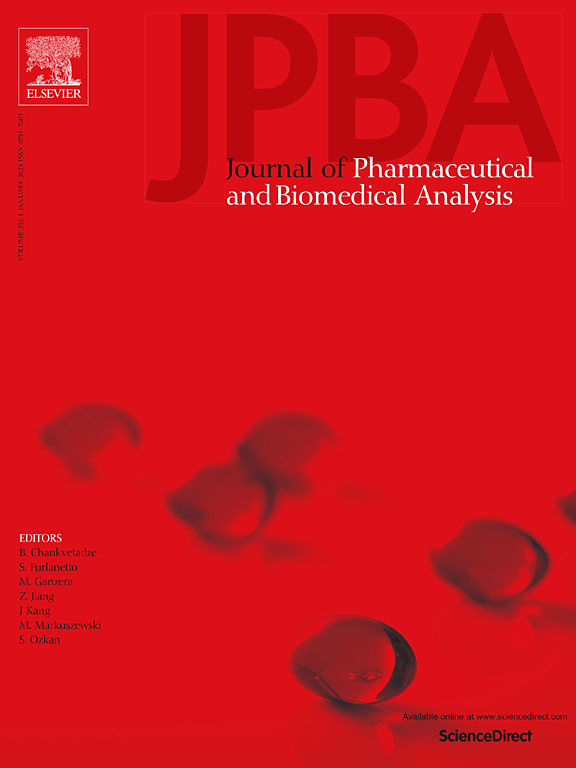MALDI MSI-based spatial amine metabolomics revealing the protective effect of combination therapy against cerebral ischemia/reperfusion-induced brain injury in rats
IF 3.1
3区 医学
Q2 CHEMISTRY, ANALYTICAL
Journal of pharmaceutical and biomedical analysis
Pub Date : 2025-01-31
DOI:10.1016/j.jpba.2025.116715
引用次数: 0
Abstract
Complex amine metabolic disorders are implicated in ischemic stroke and can further exacerbate brain damage. Therefore, ameliorating their metabolic disorder would be an effective way to improve recovery from brain damage after ischemia/reperfusion (I/R) injury. In this work, the protective effects of Edaravone (Eda), Ginaton injection (Gin), and their combination (Eda+Gin) against cerebral I/R injury in a middle cerebral artery occlusion/reperfusion (MCAO/R) rat model were preliminarily investigated from the perspective of spatial metabolomics. Compared to single-drug treatment, the optimized combination treatment with Eda and Gin significantly decreased infarct volumes, improved neurological function, and inhibited neuronal damage and glial cell activation in MCAO/R rats. Also, combination treatment could prolong the blood circulation time of quercetin, ginkgolide C, and eight flavonoid glycosides compared to Gin treatment alone. More importantly, the spatial metabolic alterations of amine metabolites in MCAO/R rats before and after drug treatment were comprehensively interrogated using matrix-assisted laser desorption/ionization mass spectrometry imaging (MALDI MSI) coupled with laser-assisted chemical transfer (LACT)-based on tissue chemical derivatization, such as amino acids, dipeptides, tripeptides, neurotransmitters, and the other amine metabolites. MALDI MSI results showed that the drastic metabolic disorders occurred in the cerebral cortex (CTX) and striatum (STR) and combination treatment exerted a better regulatory effect on the perturbed spatial amine metabolism. Therefore, combination treatment with Eda and Gin could significantly reduce ischemic brain damage and correct spatial metabolic disorders of amine metabolites, providing a potential treatment strategy for cerebral I/R injury.
求助全文
约1分钟内获得全文
求助全文
来源期刊
CiteScore
6.70
自引率
5.90%
发文量
588
审稿时长
37 days
期刊介绍:
This journal is an international medium directed towards the needs of academic, clinical, government and industrial analysis by publishing original research reports and critical reviews on pharmaceutical and biomedical analysis. It covers the interdisciplinary aspects of analysis in the pharmaceutical, biomedical and clinical sciences, including developments in analytical methodology, instrumentation, computation and interpretation. Submissions on novel applications focusing on drug purity and stability studies, pharmacokinetics, therapeutic monitoring, metabolic profiling; drug-related aspects of analytical biochemistry and forensic toxicology; quality assurance in the pharmaceutical industry are also welcome.
Studies from areas of well established and poorly selective methods, such as UV-VIS spectrophotometry (including derivative and multi-wavelength measurements), basic electroanalytical (potentiometric, polarographic and voltammetric) methods, fluorimetry, flow-injection analysis, etc. are accepted for publication in exceptional cases only, if a unique and substantial advantage over presently known systems is demonstrated. The same applies to the assay of simple drug formulations by any kind of methods and the determination of drugs in biological samples based merely on spiked samples. Drug purity/stability studies should contain information on the structure elucidation of the impurities/degradants.

 求助内容:
求助内容: 应助结果提醒方式:
应助结果提醒方式:


